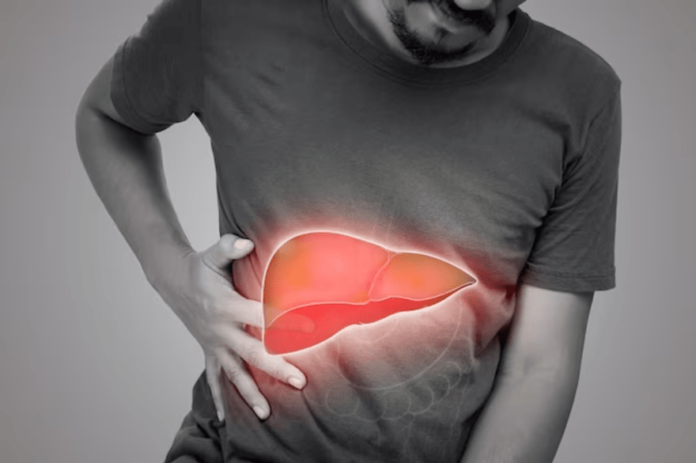Liver cirrhosis is a late stage of scarring (fibrosis) of the liver caused by many forms of liver diseases and conditions, such as hepatitis and chronic alcoholism. Each time your liver is injured, it tries to repair itself. In the process, scar tissue forms. As cirrhosis progresses, more and more scar tissue forms, making it difficult for the liver to function.
Causes of Cirrhosis
- Chronic Alcohol Abuse: Prolonged alcohol consumption can damage liver cells.
- Chronic Viral Hepatitis: Infections like hepatitis B and C can cause liver inflammation and damage.
- Nonalcoholic Fatty Liver Disease (NAFLD): Accumulation of fat in the liver not caused by alcohol can lead to cirrhosis.
- Genetic Diseases: Conditions like hemochromatosis (excess iron) and Wilson’s disease (excess copper) can lead to liver damage.
- Bile Duct Diseases: Blockage of the bile ducts, as seen in primary biliary cirrhosis or primary sclerosing cholangitis, can cause cirrhosis.
- Medications and Toxins: Long-term exposure to certain medications or environmental toxins can damage the liver.
Symptoms
Early-stage cirrhosis may not cause any symptoms. As the disease progresses, symptoms may include:
- Fatigue and weakness
- Easy bruising and bleeding
- Jaundice (yellowing of the skin and eyes)
- Itchy skin
- Fluid retention causing swelling in the legs and abdomen (edema and ascites)
- Loss of appetite and weight loss
- Nausea
- Spider-like blood vessels on the skin
- Redness in the palms of the hands
- Confusion or difficulty thinking clearly (hepatic encephalopathy)
Complications
- Portal Hypertension: Increased blood pressure in the veins that supply the liver.
- Varices: Swollen veins in the esophagus or stomach that can bleed.
- Splenomegaly: Enlargement of the spleen.
- Ascites: Accumulation of fluid in the abdomen.
- Infections: Increased risk of infections due to a weakened immune system.
- Bone Disease: Increased risk of fractures.
- Liver Cancer: Increased risk of developing hepatocellular carcinoma.
- Hepatic Encephalopathy: Accumulation of toxins in the brain due to liver dysfunction, leading to mental confusion.
Diagnosis
- Blood Tests: To check for liver function and signs of liver damage.
- Imaging Tests: Ultrasound, CT scans, and MRI to view the liver’s structure.
- Liver Biopsy: A sample of liver tissue may be taken to determine the extent of liver damage.
- Endoscopy: To check for esophageal varices.
Treatment
The goal of treatment is to slow the progression of scar tissue and prevent or treat the complications of cirrhosis.
- Lifestyle Changes: Avoiding alcohol, maintaining a healthy weight, and eating a balanced diet.
- Medications: To control hepatitis, ease symptoms, and treat complications like varices and encephalopathy.
- Regular Monitoring: For signs of progression and complications.
- Procedures: Such as banding to control bleeding varices or paracentesis to remove ascitic fluid.
- Liver Transplant: In severe cases where the liver fails, a transplant may be necessary.
Prevention
- Limit Alcohol: Avoid excessive alcohol consumption.
- Vaccinations: For hepatitis A and B.
- Healthy Diet and Weight: Maintain a healthy lifestyle to avoid NAFLD.
- Avoid Risky Behaviors: Such as sharing needles or unprotected sex to reduce the risk of hepatitis.
- Regular Checkups: For those with risk factors like chronic hepatitis or genetic conditions.
Understanding liver cirrhosis involves recognizing the balance between ongoing liver damage and the liver’s attempt to heal itself. Managing the condition often requires a multidisciplinary approach involving lifestyle modifications, medications, and potentially surgical interventions.



